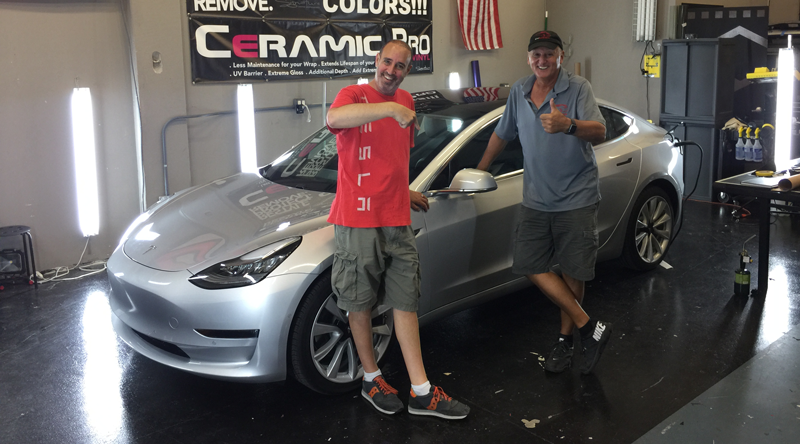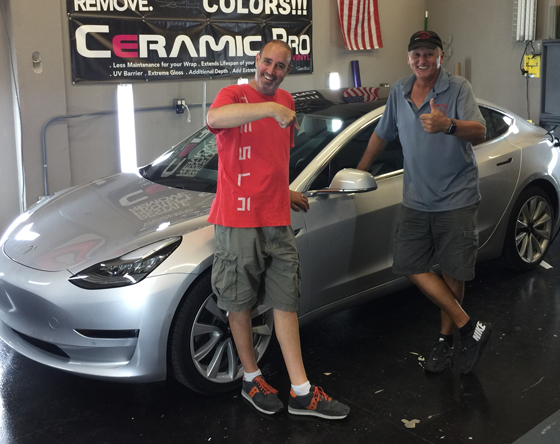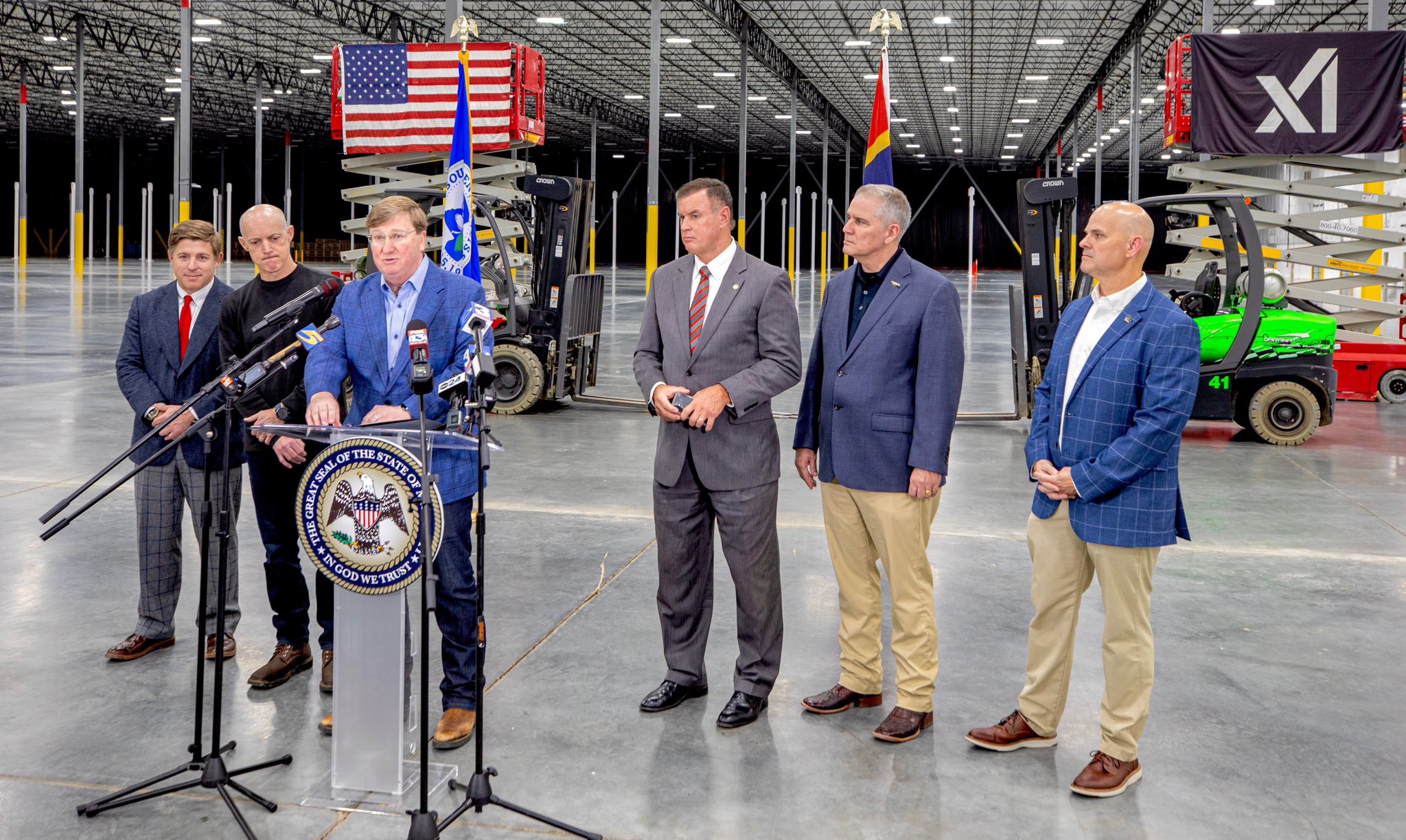

News
Tesla Showdown: We got a Model 3 and compared it to a Model S [Video]
We’ve seen a handful of Tesla Model 3 review videos floating around — including an excellent hour-long, deep-dive into the car’s features by our friends at Model 3 Owners Club. That said, we just got a chance to conduct an in-depth evaluation of Model 3 for ourselves. It’s a fascinating car and in our view, will come to dominate the mid-sized sedan segment over the next few years.
 |
Above: Considering the differences between the two Tesla sedans (Photo: EVANNEX)
In some ways, Model 3 demonstrates how Tesla has elevated its interior design capabilities and improved the integration of features, functionality, and storage as the company moves forward. In other ways, Model 3 reinforces the contention that Model S remains Tesla’s flagship sedan. We think it’s worth comparing and contrasting the two Tesla sedans to better understand the differences between the cars.
Above: Examining a few of the subtle, and not-so-subtle similarities and differences between Tesla’s Model 3 and Model S (Youtube: EVANNEX)
We spent two full days with the Model 3, reviewing the interior and exterior in granular detail. We examined the car through the lens of five years (since 2012!) of Model S ownership. Sure, some Tesla owners (like us) are wondering how these siblings stack up against one another. But there are many others pondering the possibility of owning their first Tesla. The big question is… if you’re considering the purchase of a Tesla Model 3 or Tesla Model S, which one should you buy?
Interior
Let’s compare and contrast some of the interior features of Model 3 and Model S with particular emphasis on driving and vehicle control displays, HVAC capabilities, interior volume and storage, the front driver’s compartment, and the little things that add functionality to the interior.
 |
Above: A look inside the Tesla Model 3 interior (Photo: EVANNEX)
Driving and vehicle control displays. The Model S boasts two digital displays instead of one in the Model 3. The Model 3’s horizontal, center display is also smaller (15-inch) vs. a vertical, center display which is larger (17-inch) in the Model S. Because Model S retains an information display immediately in front of the driver, it provides somewhat more comprehensive information content. As an aside, the 15-inch landscape display in Model 3 appears to be larger than it is and provides a full range of driving and vehicle information at a glance.
HVAC. Model 3’s HVAC approach demonstrates a significant step forward for Tesla. Both the Model S and Model 3 HVAC approaches are functional and capable, but the Model 3 has a definite advantage in terms of directional control and aesthetics. In addition, its novel design is impressive.
Interior volume and storage. Because Model 3 is a mid-size sedan, it can’t compete with Model S in interior volume—an important factor for many owners. Overall, interior volume in the Model S is far superior to Model 3. You get 30 cubic feet in Model S vs. 15 cubic feet in Model 3. As important in our view, the Model S hatchback design has significant advantages over the Model 3 conventional trunk opening. The hatchback opening provides very easy placement of large objects. It should be noted that the Model 3 trunk, when coupled with second row fold-down seats, does offer the ability to carry long objects with relative ease. The Model S also has a power lift gate instead of the Model 3’s manual trunk. In addition, Model S has a larger frunk than Model 3.
Seating. Model S has seating for 5 adults + 2 children (with rear facing “jump” seats). Model 3 only has seating for 5 adults. That said, Model 3’s seat quality, design, and overall spaciousness of the cabin were comparable to Model S.
Driver visibility. The interior design of Model 3 is striking in the sense that it eliminates the binnacle that normally sits directly in front of the driver, replacing it with a 15-inch landscape center display. With the binnacle removed, the Model 3 dash is lowered, allowing a more complete view of the road immediately in front of the vehicle. The large expanse of glass above the driver provides the feeling of an aircraft cockpit.
Center console. Sitting in the driver side cockpit of Model 3, it becomes obvious that Tesla has improved its interior design chops. The center console for Model 3 (available with the premium option package) is well-designed and functional. It offers easy mobile device charging, dual USB ports along with a 12V port, and elegant storage, complemented by storage compartments in the doors.
Lack of buttons. For Model 3, just about everything except window and door opening is controlled via the landscape display. This level of software control is impressive, but we felt that there might be times when it would be easier to use an analog alternative for, say, the control of the side mirrors or glove box.
The little things. There are little things you’ll find in a Model 3 that are absent from the Model S — coats hooks, built-in rear seat armrest, small storage compartments, back-of-seat kangaroo pockets, etc. To be a bit self-serving for a moment, most of these items can be had (in the aftermarket) for Model S from EVANNEX.
Exterior
Moving to the exterior, it’s apparent that Model 3 has the same vehicle DNA as Model S, but like all siblings, there are visual (as well as characteristic) differences.
 |
Above: Tesla’s sleek design of its new Model 3 (Photo: EVANNEX)
Looks. The most obvious (in-person) differences are the shorter hood for Model 3, the noticeably narrower width of the vehicle, and smaller wheels. Because it is shorter and narrower, Model 3 has a less striking stance than Model S. Overall, the larger size of the Model S is more visually impressive. We think it’s fair to state that many Model 3 owners will remedy some of these issues in the aftermarket, but in the case of Tesla’s sedan siblings, size matters.
Sensor suite. Autopilot (and ultimately, autonomous driving capability) will be available for both Model S and Model 3. It appears that functionality and capabilities in this domain will be identical.
Door handles. We did have a few small quibbles with Model 3. The push-rotate-grab door handles of Model 3 achieve the required aerodynamic advantages for an electric vehicle, but they pale in comparison to the auto-present and retract door-handles for Model S. We felt that Model 3 handles weren’t as ergonomic, particularly if you’re carrying something as you get into the vehicle.
Wheels. The 18-inch Model 3 aero covers are a matter of personal taste, but the underlying wheel (rim) is a bit conventional in our view and doesn’t offer an aesthetic that Model 3 deserves. The 19-inch wheels (available as an option) are more interesting, but still a bit less luxe than Model S (19-inch and 21-inch) wheel options.
Driving
Performance. Before going any further, it’s important to note that we weren’t able to test drive the Model 3 during our recent evaluation. Last year, we did enjoy a test ride in the Model 3 prototype at Tesla’s launch event. At that time the ride of Model 3 felt like a Model S, but it didn’t have the explosive torque and power that Model S owners are accustomed to. If you’re looking for ludicrous 0-60 mph times (gulp, 2.28 seconds), the Model S is your car. On the other hand, the published findings of a number of different test drives indicate that drivability and overall performance of Model 3 are quite impressive for a car at its price point. To that end, Model 3 can race a respectable 0-60 mph in 5.1 – 5.6 seconds.
Range. Both Model S and Model 3 have plenty of range for road trips and access to Tesla’s vast Supercharger network. On the whole, depending on which variant you look at, Model S will provide more range (259 – 335 miles of range) than Model 3 (220 – 310 miles of range). Also, many Model S owners will be able to take advantage of free supercharging (with a referral) whereas Model 3 owners will not have access to that particular perk.
The Verdict
In reality, the Model 3 and Model S are different vehicles for different demographics. Both have the same vehicle DNA, both will turn heads, and both are the epitome of current automotive technology. It’s clear — you definitely want a Tesla. Which Tesla is right for you?
 |
Foreground: A new “refresh” Tesla Model S (left) across from a used “signature” Tesla Model S (right); Background: Tesla Model 3 (Photo: EVANNEX)
Although we were extremely impressed with the Model 3, if you’re considering a Tesla (and can afford it), we recommend going with Model S. On performance and premium feel, Model S wins going away. On exterior aesthetics, Model S provides a head-turning design that Model 3 can’t match. On (a few) interior design cues, it’s Model 3 by a nose. On interior space, seating, and storage volume, Model S triumphs. And if you consider availability, you can get your hands on a new or used Model S in a matter of weeks. Model 3 availability? That’s an entirely different discussion.
===
Note: Article originally published on evannex.com, by Matt Pressman

Elon Musk
Elon Musk’s xAI bets $20B on Mississippi with 2GW AI data center project
The project is expected to create hundreds of permanent jobs, dramatically expand xAI’s computing capacity, and further cement the Mid-South as a growing hub for AI infrastructure.

Elon Musk’s xAI plans to pour more than $20 billion into a massive new data center campus in Southaven, Mississippi, marking the largest single economic development project in the state’s history.
The project is expected to create hundreds of permanent jobs, dramatically expand xAI’s computing capacity, and further cement the Mid-South as a growing hub for AI infrastructure.
xAI goes MACROHARDRR in Mississippi
xAI has acquired and is retrofitting an existing facility in Southaven to serve as a new data center, which will be known as “MACROHARDRR.” The site sits near a recently acquired power plant and close to one of xAI’s existing data centers in Tennessee, creating a regional cluster designed to support large-scale AI training and inference.
Once completed, the Southaven facility is expected to push the company’s total computing capacity to nearly 2 GW, placing it among the most powerful AI compute installations globally. The data center is scheduled to begin operations in February 2026.
Gov. Tate Reeves shared his optimism about the project in a press release. “This record-shattering $20 billion investment is an amazing start to what is sure to be another incredible year for economic development in Mississippi. Today, Elon Musk is bringing xAI to DeSoto County, a project that will transform the region and bring amazing opportunities to its residents for generations. This is the largest economic development project in Mississippi’s history,” he said.
xAI’s broader AI ambitions
To secure the investment, the Mississippi Development Authority approved xAI for its Data Center Incentive program, which provides sales and use tax exemptions on eligible computing hardware and software. The City of Southaven and DeSoto County are also supporting the project through fee-in-lieu agreements aimed at accelerating development timelines and reducing upfront costs.
Founded in 2023 by Elon Musk, xAI develops advanced artificial intelligence systems focused on large-scale reasoning and generative applications. Its flagship product, Grok, is integrated with the social media platform X, alongside a growing suite of APIs for image generation, voice, and autonomous agents, including offerings tailored for government use.
Elon Musk highlighted xAi’s growth and momentum in a comment about the matter. “xAI is scaling at an immeasurable pace — we are building our third massive data center in the greater Memphis area. MACROHARDRR pushes our Colossus training compute to ~2GW – by far the most powerful AI system on Earth. This is insane execution speed by xAI and the state of Mississippi. We are grateful to Governor Reeves for his support of building xAI at warp speed,” Musk said.
Elon Musk
Tesla AI Head says future FSD feature has already partially shipped

Tesla’s Head of AI, Ashok Elluswamy, says that something that was expected with version 14.3 of the company’s Full Self-Driving platform has already partially shipped with the current build of version 14.2.
Tesla and CEO Elon Musk have teased on several occasions that reasoning will be a big piece of future Full Self-Driving builds, helping bring forth the “sentient” narrative that the company has pushed for these more advanced FSD versions.
Back in October on the Q3 Earnings Call, Musk said:
“With reasoning, it’s literally going to think about which parking spot to pick. It’ll drop you off at the entrance of the store, then go find a parking spot. It’s going to spot empty spots much better than a human. It’s going to use reasoning to solve things.”
Musk said in the same month:
“By v14.3, your car will feel like it is sentient.”
Amazingly, Tesla Full Self-Driving v14.2.2.2, which is the most recent iteration released, is very close to this sentient feeling. However, there are more things that need to be improved, and logic appears to be in the future plans to help with decision-making in general, alongside other refinements and features.
On Thursday evening, Elluswamy revealed that some of the reasoning features have already been rolled out, confirming that it has been added to navigation route changes during construction, as well as with parking options.
He added that “more and more reasoning will ship in Q1.”
🚨 Tesla’s Ashok Elluswamy reveals Nav decisions when encountering construction and parking options contain “some elements of reasoning”
More uses of reasoning will be shipped later this quarter, a big tidbit of info as we wait v14.3 https://t.co/jty8llgsKM
— TESLARATI (@Teslarati) January 9, 2026
Interestingly, parking improvements were hinted at being added in the initial rollout of v14.2 several months ago. These had not rolled out to vehicles quite yet, as they were listed under the future improvements portion of the release notes, but it appears things have already started to make their way to cars in a limited fashion.
Tesla Full Self-Driving v14.2 – Full Review, the Good and the Bad
As reasoning is more involved in more of the Full Self-Driving suite, it is likely we will see cars make better decisions in terms of routing and navigation, which is a big complaint of many owners (including me).
Additionally, the operation as a whole should be smoother and more comfortable to owners, which is hard to believe considering how good it is already. Nevertheless, there are absolutely improvements that need to be made before Tesla can introduce completely unsupervised FSD.
Elon Musk
Tesla’s Elon Musk: 10 billion miles needed for safe Unsupervised FSD
As per the CEO, roughly 10 billion miles of training data are required due to reality’s “super long tail of complexity.”

Tesla CEO Elon Musk has provided an updated estimate for the training data needed to achieve truly safe unsupervised Full Self-Driving (FSD).
As per the CEO, roughly 10 billion miles of training data are required due to reality’s “super long tail of complexity.”
10 billion miles of training data
Musk comment came as a reply to Apple and Rivian alum Paul Beisel, who posted an analysis on X about the gap between tech demonstrations and real-world products. In his post, Beisel highlighted Tesla’s data-driven lead in autonomy, and he also argued that it would not be easy for rivals to become a legitimate competitor to FSD quickly.
“The notion that someone can ‘catch up’ to this problem primarily through simulation and limited on-road exposure strikes me as deeply naive. This is not a demo problem. It is a scale, data, and iteration problem— and Tesla is already far, far down that road while others are just getting started,” Beisel wrote.
Musk responded to Beisel’s post, stating that “Roughly 10 billion miles of training data is needed to achieve safe unsupervised self-driving. Reality has a super long tail of complexity.” This is quite interesting considering that in his Master Plan Part Deux, Elon Musk estimated that worldwide regulatory approval for autonomous driving would require around 6 billion miles.
FSD’s total training miles
As 2025 came to a close, Tesla community members observed that FSD was already nearing 7 billion miles driven, with over 2.5 billion miles being from inner city roads. The 7-billion-mile mark was passed just a few days later. This suggests that Tesla is likely the company today with the most training data for its autonomous driving program.
The difficulties of achieving autonomy were referenced by Elon Musk recently, when he commented on Nvidia’s Alpamayo program. As per Musk, “they will find that it’s easy to get to 99% and then super hard to solve the long tail of the distribution.” These sentiments were echoed by Tesla VP for AI software Ashok Elluswamy, who also noted on X that “the long tail is sooo long, that most people can’t grasp it.”








